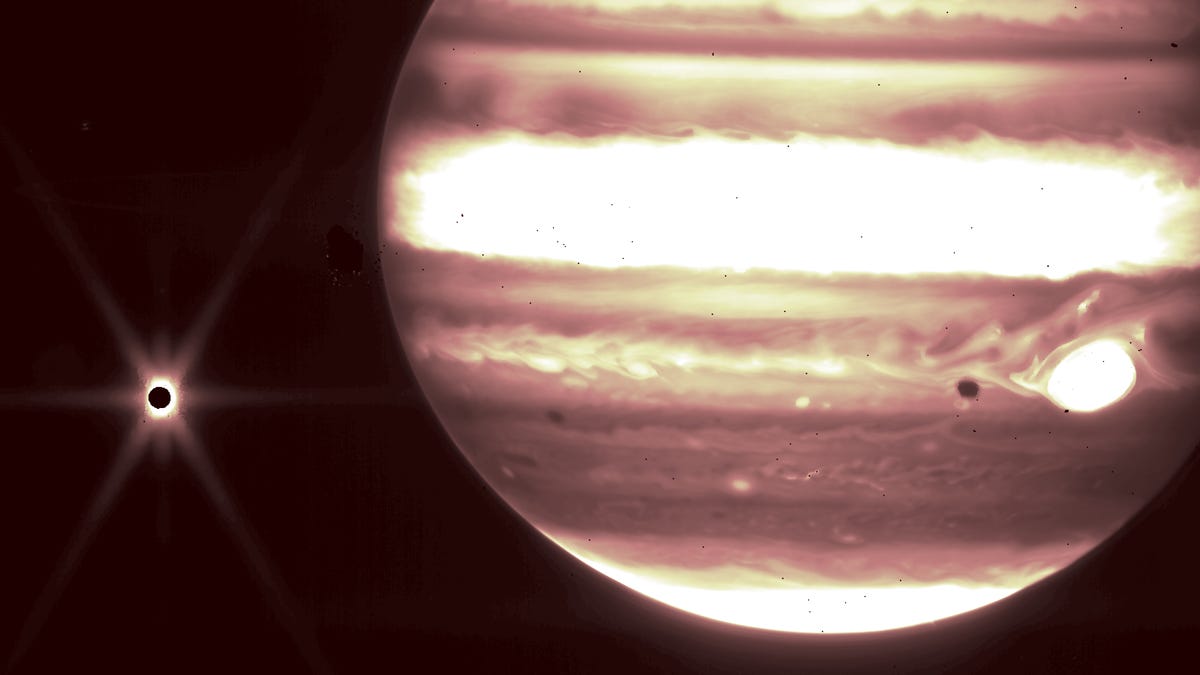NASA Shares 'Absolutely Astonishing' Webb Space Telescope Views of Jupiter
The space agency's new plaything continues to hit it out of the park and out of this world.

Jupiter and its moon Europa seen through the James Webb Space Telescope's NIRCam instrument 2.12 micron filter.
More images from NASA's favorite new toy, the next-generation James Webb Space Telescope, continue to trickle out following the official release of the first scientific images taken of objects in deep space.
Astronomers have also been giddy over images taken during the telescope's testing, or commissioning phase, earlier this year of our local gassy giant neighbor, Jupiter. Two images were hiding out in a commissioning report released on July 12, but on Thursday, NASA dropped even more views of the largest planet in the solar system as seen through Webb's near-infrared camera, or NIRCam.
Images like the one above show Jupiter and its moon Europa shimmering in infrared wavelengths. Europa is covered by an icy shell that hides a subsurface ocean below, which some astronomers believe could be one of the most promising spots in the solar system to search for life. Plumes from these hidden seas have been observed erupting out into space by Webb's predecessor, the Hubble Space Telescope. Webb may be able to provide a closer look at the eruption and the material that escapes and falls back on the frozen surface of the moon.
"I think that's just one of the coolest things that we'll be able to do with this telescope in the solar system," said NASA's Stefanie Milam in a blog post.
Jupiter and some of its moons are seen through NIRCam's 3.23 micron filter.
Another NIRCam image utilizing a different filter picked up some of Jupiter's smaller moons and even the planet's faint rings that are usually hard to spot.
Milam said that the fact the rings are visible in one of Webb's first solar system images is "absolutely astonishing and amazing."
"I couldn't believe that we saw everything so clearly, and how bright they were," Milam added. "It's really exciting to think of the capability and opportunity that we have for observing these kinds of objects in our solar system."
Webb was also put to the test during commissioning to see how well it would do trying to track faster-moving objects. It managed to perform better than it was designed to do, capturing the asteroid 6481 Tenzing whizzing about between Mars and Jupiter.
I like the gif of little asteroid 6481 Tenzing as it zips across the sky against a background of stars in this series of images taken by NIRCam. Credits: NASA, ESA, CSA, and B. Holler and J. Stansberry (STScI) pic.twitter.com/Q74cLliFlF
— Dr Heidi B. Hammel (@hbhammel) July 14, 2022
Bryan Holler, a scientist at the Space Telescope Science Institute, helped plan these observations and said they "demonstrate the full grasp of what Webb can observe, from the faintest, most distant observable galaxies to planets in our own cosmic backyard that you can see with the naked eye from your actual backyard."

